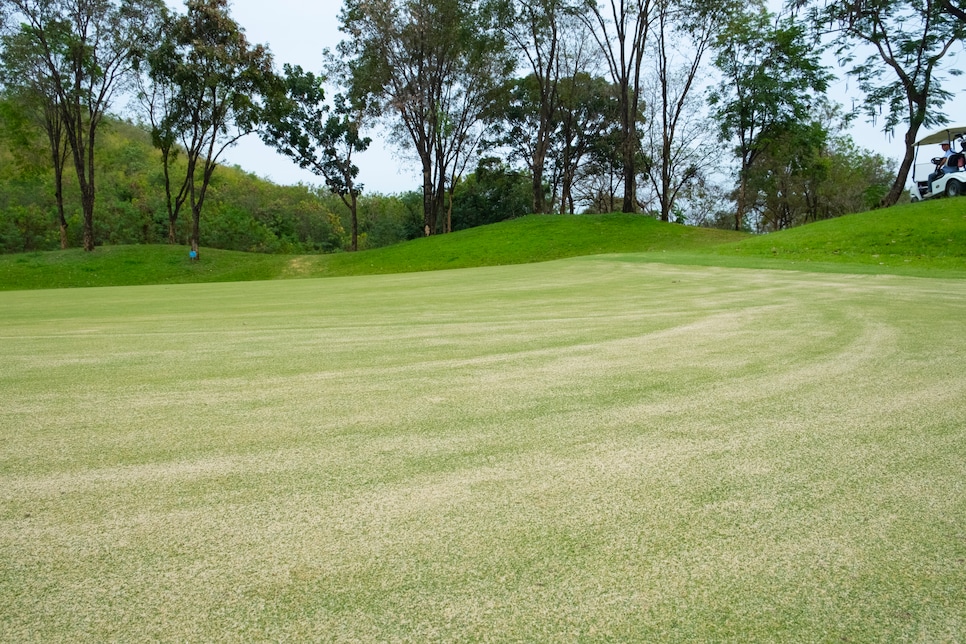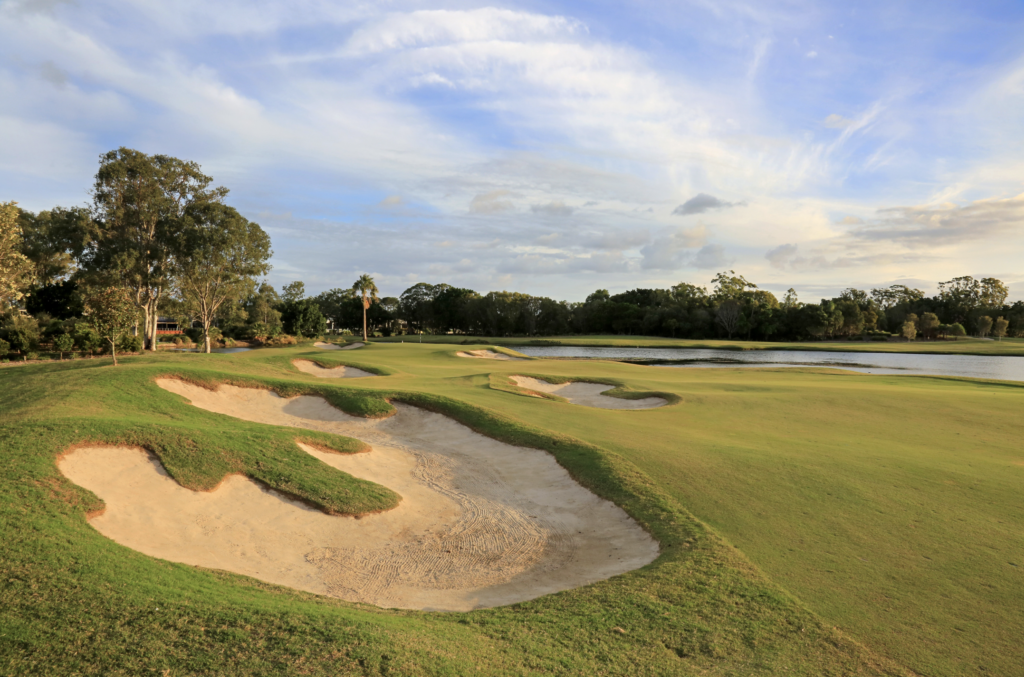A top course reveals the $30,000-a-year secret to firm-and-fast greens – Australian Golf Digest

- by Admin
- November 13, 2024

The greens at top-tier courses are always top-notch, but it’s not just the speed that makes them stand out. Much of the time, elite courses maintain firm putting surfaces throughout the season, even during the wet spring months. These firm greens enhance strategic shot options and provide golfers with consistent playing conditions. So why isn’t every course able to maintain firm greens? That’s what we discussed with Mike Dachowski, the director of agronomy at Shelter Harbor Golf Club, a Second 100 Greatest course in in Charlestown, R.I.
LC Lambrecht/Courtesy of the club false Private Shelter Harbor Golf Club Charlestown, RI 4.6 9 Panelists
- Second 100 Greatest
- Best In State
Though the late club founder and northeastern financier Finn Caspersen was not an avid golfer, he was intrigued by the idea of building a club near his summer home in Rhode Island. But the property he had was challenging and quite severe in places, strewn with wetlands and studded with huge boulders. He ultimately determined that Hurdzan/Fry was the firm that had the environmental chops and creative juice to make the most of it. Though the holes were limited in where they could go, they achieve a desired “old New England” flavor that mixes well with the more historic courses in the neighborhood and possess a dynamic range of strategic lines, carry options and green sizes. The early 1900s bunkering, crafted by Coore & Crenshaw shaper Jeff Bradley, is icing on the cake. Explore our full review
Golf Digest: Mike, sometimes when I go to really nice courses, I notice the greens have a small layer of sand on top. What’s going on there?
Dachowski: Exactly, that’s top dressing, and it helps firm up the greens. At Shelter Harbor, we top dress consistently through growth period. Once the grass starts growing, we top dress every week. That keeps the greens firmer, so we never really get too soft where we can’t roll. The top dressing is just sand, and it protects the crown of the plant, firms the surface and dilutes the thatch.
Interesting. You mention the top dressing helping with rolling the greens. Can you explain that a little more?
I roll way more than I cut. I typically only cut the greens every other day and roll every day. We roll seven days a week and cut the greens typically four. The cutting takes way more labor, especially if you’re hand-mowing compared to rolling. You can create super consistent green speeds mowing every other day if you roll every day.
To be able to roll every day, you need firmer greens. That’s why we top dress weekly during the growing period, basically from mid-May to mid-October, and we roll every day and have super consistent greens that way. We don’t really get these peaks and valleys or a flush of growth. It can rain out here and play pretty similar to what it does when it’s dry. Our whole goal is just to create consistency day to day.
If you’re consistent with top dressing through a growing season, you’re going to dilute the thatch naturally without aerifying. Or, I should say, you don’t have to aerify as aggressively then. There’s nobody I know that top dresses frequently that has bad greens.

nanonoum
There doesn’t seem to be much downside to top dressing frequently. So, what’s the catch? Why doesn’t every course consistently sand their greens?
It’s expensive. It’s not cheap. It’s the cost of it and the cost of trucking it in. It gets a little crazy.
I’ll break it down. For us, it’s $135 a ton [at the time of conversation], and we use roughly 4.5 tons of sand per week. We have about 4.5 acres of greens at Shelter Harbor and we use about a ton of sand per acre each week. It all depends on your rate, but on average, I use about 225 tons of sand a year on the greens, not counting aerations. That’s just on top dressing.
Add that up, and it costs us about $30,000 a year to top dress consistently for our 4.5 acres of greens. You can see why people would cut it out, but it’s one of the most important things, in my opinion.
You also need to make sure you have the right sand, too. Just like in the bunkers, it’s important to have the right sand when you top dress. If you get one that’s not right, it gets too marbly and can soften things. Think about when you walk on a beach and it’s sand, for example. But if you get the right sand, it firms the greens up.
MORE ASK A SUPER
This common golf-cart mistake is a ‘superintendent’s worst nightmare’
You might be throwing broken tees in the wrong spot. A course superintendent explains why
Should I leave bunker rakes inside or outside the sand?
How courses prep for high-level competition, according to top USGA experts
Why are practice greens slower than greens on the course?
Why’s the grass all brown on our course?
Why are you aerating our greens when they’re in perfect shape?
I repaired my ball mark, but it still doesn’t look right. What did I do wrong?
We all want fast greens, why can’t you just cut them shorter?
Why your superintendent is hoping for lots of snow this winter
This article was originally published on golfdigest.com
The Latest News
-
November 14, 2024Moonee Valley Races Betting Sites/Apps Offers, Free Promo Codes and Bonuses – 15/11/2024
-
November 14, 2024Virat Kohli was once the king. He’s now in the company of journeymen
-
November 14, 2024Why major champs recommend that you murder your golf clubs every once in a while – Australian Golf Digest
-
November 14, 2024Hayes retires from VFL | Wyndham
-
November 14, 2024Australian Brett Robinson elected chairman of World Rugby




